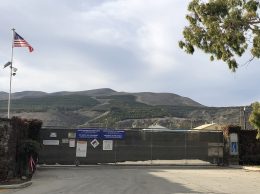Our View: Santa Barbara sales tax measure could be tough to sell
IN THIS ARTICLE
- Editorials Topic
- Editorial board and Henry Dubroff Author
By Editorial board and Henry Dubroff Friday, July 7th, 2017
With one survey indicating solid voter support and a willing city council going along, Santa Barbara Mayor Helene Schneider has gotten the votes necessary to place a 1 cent general sales tax hike on the ballot for November.
The June 28 vote caps a discussion that began earlier this spring when the idea of a sales tax increase was widely debated in the Business Times and elsewhere. Now begins the countdown to what could be one of the more contentious elections in recent memory in Santa Barbara; the vote on the sales tax coincides with the election of a new mayor to replace the termed-out Schneider.
Early surveys may favor the sales tax levy but that does not make it a slam dunk — or good public policy. City officials argue that the $22 million a year generated by the higher sales tax is needed for infrastructure improvements that were put on hold when the state seized some $100 million in redevelopment authority funds half a dozen years ago.
Not addressed so far in the sales tax measure are three important questions:
• What to do about the city’s acute housing shortage, a shortage that’s shifting massive cost burdens to West Ventura County and the Santa Maria Valley, where thousands of Santa Barbara workers now live.
• How to manage Santa Barbara’s homeless and aggressive behavior by vagrants who have turned the city center into a much less desirable shopping area than it was a decade ago.
• How to deal with rising vacancies on State Street and a decline in retail sales tax receipts that are partly the result of housing and homeless policies but also reflect a host of other issues.
Unlike sales tax measures for transportation improvements that failed narrowly last fall in Ventura and San Luis Obispo counties, the Santa Barbara measure has a lower threshold of 50 percent plus one vote. That is the same threshold as Ventura’s Measure Q sales tax hike, which did pass last fall.
But they will have to convince voters that it makes sense for Santa Barbara’s sales tax rate to rise to 8.75 — the same as Monterey and Palm Springs — while Ventura and San Luis Obispo are a full percentage point lower.
And they will have to convince the city’s business leadership that a sales tax increase this year is broader strategy to put Santa Barbara on firmer fiscal footing for the long haul.
CONSTRUCTION CHALLENGES
If you are trying to remodel a home or build a new warehouse just about anywhere in the Tri-Counties, you will note two things.
First, in residential construction, costs are going up due to rising wages for non-skilled and non-union labor. Second, in commercial construction, delays are getting more frequent and subcontractors are simply not bidding on work because their calendars are full and they’re not able to find employees to add more crews.
As Dow Jones News Fund intern Matt Ackerman writes in the current issue of the Business Times, such is the state of the construction industry across the Central Coast and much of California at this point.
In the tri-county region, the dearth of skilled workers again underscores how high housing costs hollow out the skilled trades, where home ownership is far out of reach of the average electrician or carpenter. Unless something changes, our future workers will be shipped in from Fresno or Bakersfield — something that’s already happening in the Santa Maria Valley.
Related Articles
 Friday, October 14th, 2022
Friday, October 14th, 2022










